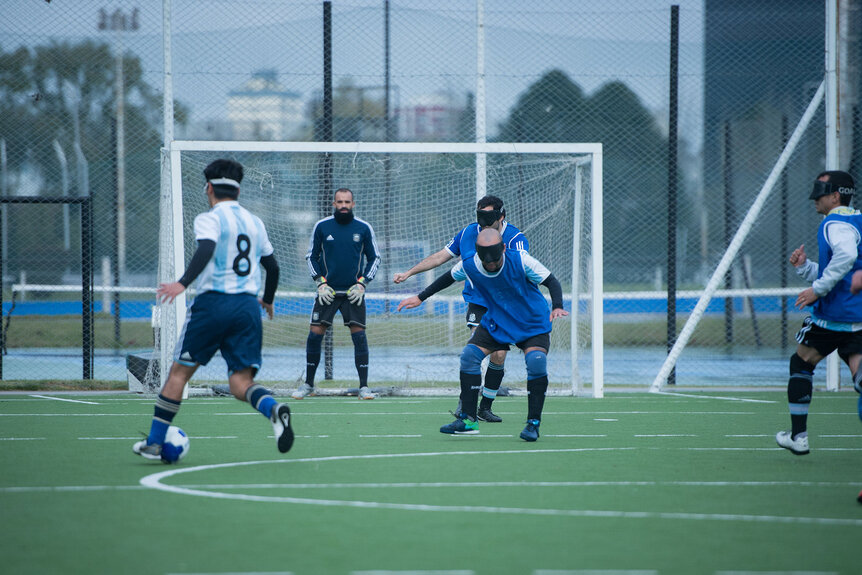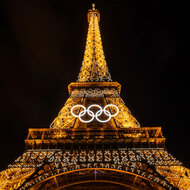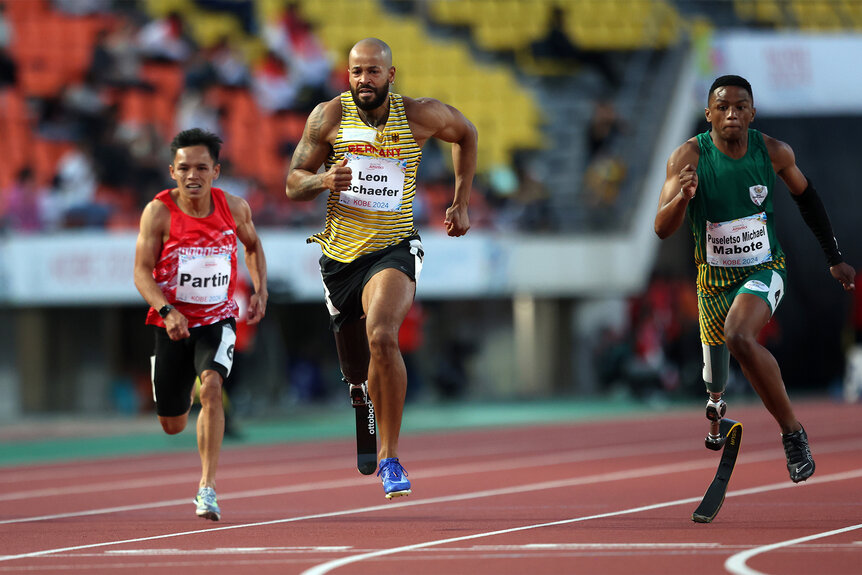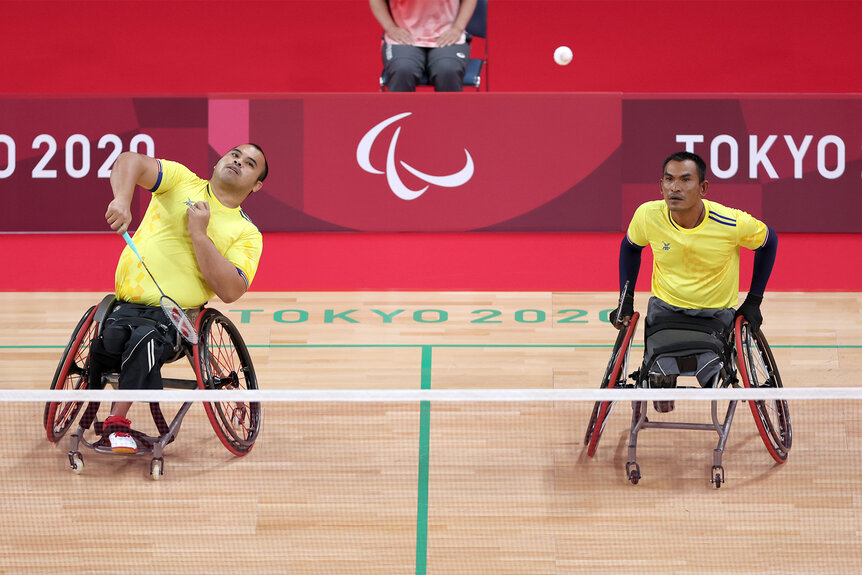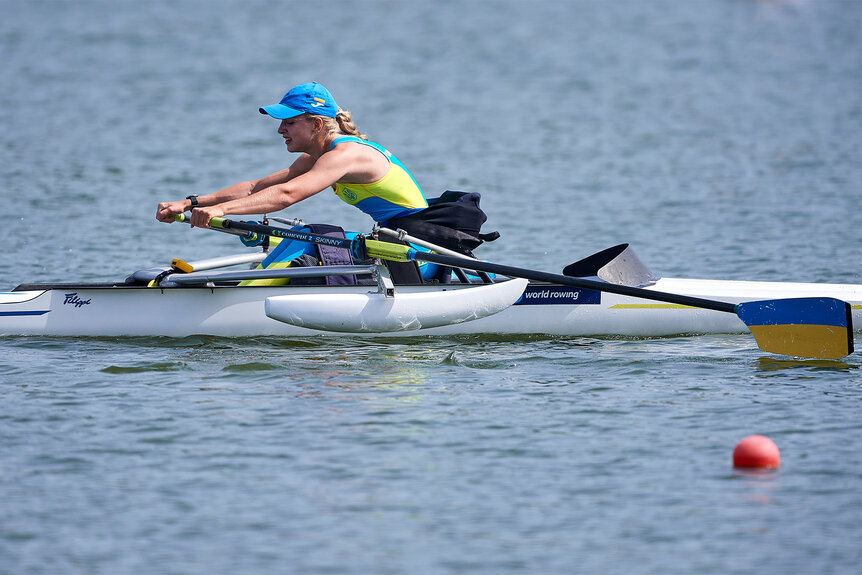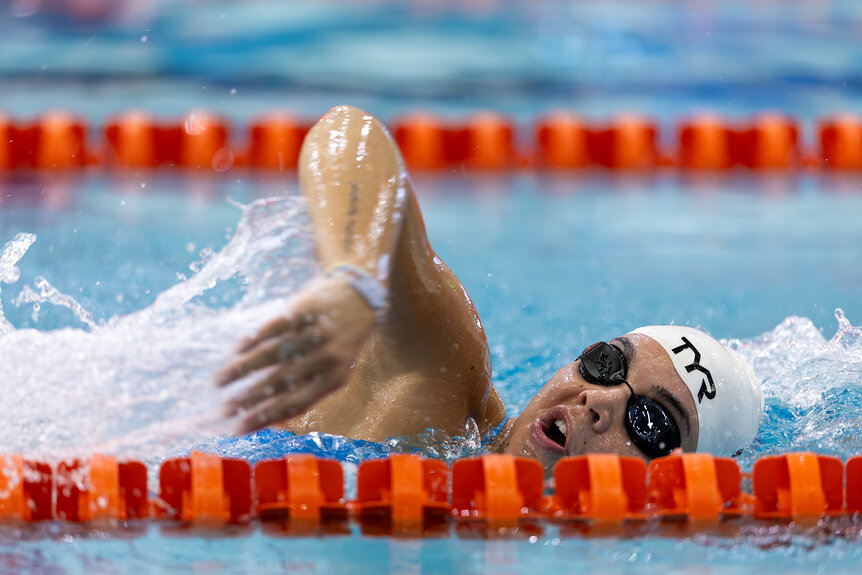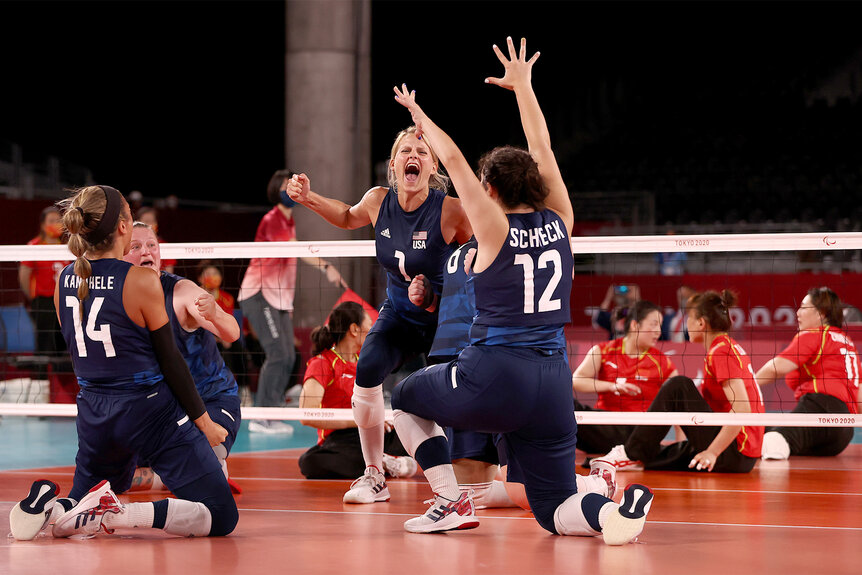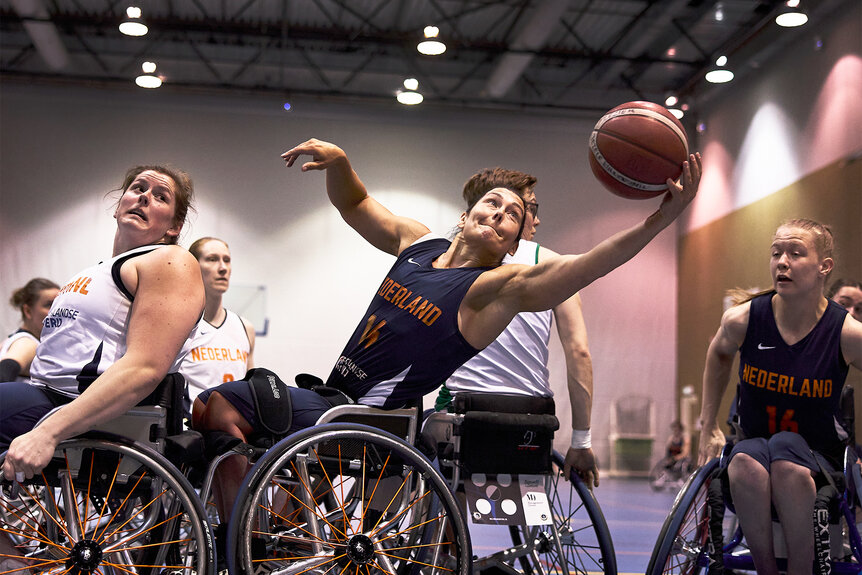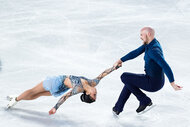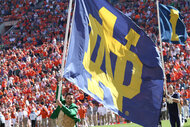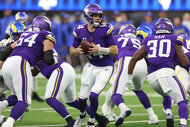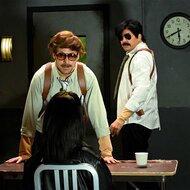What Sports are in the 2024 Paris Paralympic Games?
From goalball to para archery to wheelchair rugby, a quick primer on the 22 sports at this year's Paralympics.
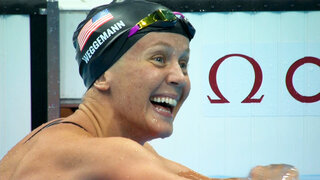
The Paris Olympics may have ended earlier this month, but the City of Light is still under the brightest of spotlights in the sporting world.
Starting with the Opening Ceremony on August 28, the 2024 Paralympic Games are set to continue the grand sporting tradition that celebrates and empowers para-athletes on the same global stage as their Olympic counterparts.
The 22 sports cover a wide range that includes variations of the Olympic versions, such as para swimming and wheelchair tennis, to unique sports like goalball and boccia. The common denominator is a chance for 4,400 special, world-class athletes to shine and inspire others.
Here is a quick primer on the sports that will be on display over the 11 days of sporting competition:
Blind Football
An off-shoot of the sport known as soccer on this side of the Atlantic, blind football features two teams of five visually impaired athletes – four outfield players and one goalkeeper on each squad. The players play on 40-meter by 20-meter pitch, albeit with boards surrounding the field to prevent the ball from going out of bounds. A bell inside the ball alerts players to its location.
Goalies must be sighted or partially sighted. Outfield players have been classified as completely blind, but in the interest of fairness, everyone wears a face mask covering their eyes.
Brazil has dominated since the introduction of the sport at the Paralympics at the 2004 Athens Games, winning every gold medal since.
The games, which consist only of a men's tournament, will be held from September 1-7 at the Eiffel Tower Stadium in the shadow of the world-famous monument. The venue hosted the beach volleyball matches during the Summer Olympics.
Boccia
Boccia is a game unique to the Paralympics in which two teams (red and blue) compete either as individuals, pairs, or trios, to roll their balls closest to a “the Jack,” a white ball. The competitors use wheelchairs and can enlist the help of assistants and supporting gear depending on their impairment classification.
The 11 medal events will take place between August 29 and September 5 at the South Paris Arena, part of the Paris Expo Convention Center.
Goalball
One of the few Paralympic sports that does not have an Olympic counterpart, goalball pits two teams of visually impaired players as they try to bounce, spin, or curve a ball into the opposing net.
Three teammates play on the court at any given time and use blackout eye masks to account for differing levels of visual acuity. The balls have bells inside allowing players to zero in on a location, so defenders have a chance of blocking a goal attempt by hurling their bodies in its path. The ball must bounce at least once in a designated area in front of each thrower for it to count, so they generally stay close to the ground.
The sport, originally created to help veterans blinded during World War II, debuted for men at the Toronto Games in 1976, and for women eight years later.
Goalball games will also take place at the South Paris Arena, part of the Paris Expo, the city’s mammoth convention complex, between August 29 and September 5.
Para Archery
German-British doctor Ludwig Guttman, considered the founder of the Paralympic movement, introduced para archery to help rehabilitate wounded veterans in the 1940s, and the sport was part of the inaugural Games in Rome in 1960.
The competition is divided into distances of 50 or 70 meters, and into recurve and compound bow categories. There is also an additional category for competitors with impairments in both the top and bottom halves of their body.
The nine medal events will be held from August 29 through September 5th at The Esplanade des Invalides garden in central Paris.
Para Athletics (Para Track and Field)
A mainstay since the inaugural 1960 Rome Games, para athletics makes up the largest category of the Paralympics, featuring up to 1,069 athletes across 164 medal events, according to the official Paralympics site.
The track events include distances ranging from 100 meters through a 42-kilometer marathon; the field events include the long jump, club throw, high jump, discus throw, javelin throw, and shot put. There are further divisions by type of impairment, with athletes able to compete in wheelchairs, using prostheses, or being aided by sighted guides.
The events will be held at The Stade De France from August 30 through September 8. The marathon will be held on the final day of the Games starting in Seine-Saint-Denis, a Parisian suburb, and finishing in front of the Esplanade des Invalides inside Paris.
Para Badminton
This racquet sport is a relatively new addition to the Paralympics slate, debuting at the Tokyo 2020 Games. Events are divided by gender or mixed doubles, as well as by classifications for type of physical impairment.
The competition pits opposing players or pairs on a court with a net; the players must hit a shuttlecock across the net without being returned to earn a point. The matches are best of three games, with the first to reach 21 points – with at least a two-point cushion – winning each game.
Para badminton games will be held between August 29 through September 2 at the new 6,700-seat Porte de la Chapelle Arena.
Para Canoe
A relatively new addition to the Paralympics lineup, para canoe debuted in the 2016 Rio Games. The competition features two types of boats – kayaks and va’a – and further split along gender lines and classes of impairment.
The 10 medal events will be held at the new Vaires-sur-Marne Nautical Stadium near Disneyland Paris and run from September 6 through September 8.
Para Cycling
Introduced to the Paralympics in 1984, cycling has grown over the years to include both road (outdoor) and track (indoor) events.
The road races draw a vast range of competitors, who use bicycles, handcycles, tricycles and tandem bikes depending on their impairments, and are grouped with similar competitors.
The 17 track events will be held at the Saint-Quentin-en-Yvelines Velodrome in Montigny-le-Bretonneux, outside of Paris. The outdoor route, roughly 14 kilometers long, starts and ends in the bucolic Parisian suburb of Clichy-sous-Bois. The track events run from August 29 through September 1, while the road events are held from September 4 through 7.
Para Equestrian
A Paralympic event since the 1996 Athens Games, para equestrian events showcase the abilities of riders to coax their horses through a series of movements. The categories are arranged according to physical impairments. Great Britain has dominated the sport since its Paralympic Games debut, earning 34 gold medals and 64 total medals.
The 11 medal events, including a team championship, will be held between September 3 through 7 amid the opulent splendor of the ground of the Chateau de Versailles, the home to the court of King Louis XIV.
Para Judo
A mainstay of the Paralympics since its debut during the 1988 Seoul Games, para judo pits two visually impaired martial artists against each other as they attempt to throw, pin, or lock up their opponent to win the most points during a match.
Japan, the historic homeland of the martial art, has dominated the Paralympics at Judo, winning 30 medals, including 12 golds.
The para judo matches will be held at the Champ de Mars Arena from September 5 through 7.
Para Powerlifting
Weightlifting has been a staple of the Paralympics since the 1964 Games in Tokyo, although the current form of men’s powerlifting was introduced 20 years later. The women’s version debuted 16 years after that at the 2000 Sydney Games. Much like the sport’s Olympic counterpart, the events showcase feats of pure strength.
All competitors in the events have an impairment in their legs or hips, and are divided along gender and bodyweight categories. The powerlifters must push the weight up from their chest to a position in which their arms are locked to score a successful lift.
The 20 para powerlifting events will be held at the brand-new Porte de la Chapelle Arena from September 4 through 8.
Para Rowing
Premiering at the 2008 Beijing Games, para rowing features six teams of rowers racing boats 2000 meters to the finish line. The rules are similar to Olympic rowing. There are three types of races – single sculls for men’s and women’s, and double sculls and coxed four for mixed teams, the latter further divided by the impairment class of the participants.
The five medal events will be held at the new Vaires-sur-Marne Nautical Stadium near Disneyland Paris and run from August 30 through September 1.
Para Swimming
One of the more popular sports of the Paralympics since the inaugural Games in Rome in 1960, para swimming has grown to include 141 medal events. More than 600 athletes will compete in breaststroke, backstroke, butterfly and freestyle, making it the second largest category at the Paralympic Games after track and field.
Categories are further divided by levels of physical, vision, or intellectual impairment. And unlike other Paralympics events, prostheses are not allowed to be used in competition.
The swimming events will take place in the La Defense Arena from August 29 through September 7.
Para Table Tennis
One of the original eight sports introduced at the first Paralympics Games in Rome in 1960, para table tennis uses similar rules to the Olympic version. Depending on their impairment classes, competitors can use wheelchairs or other necessary aids, such as canes.
The 31 medal events will be played from August 29 through September 7 at the South Paris Arena, part of the Paris Expo convention center.
Para Taekwondo
Another relatively new addition to the Paralympics lineup, para taekwondo was introduced at the 2020 Tokyo Paralympic Games. Competitors face off in one-round matches, scoring points for kicks to their opponent’s torso.
Events are divided by gender, weight-class, and impairment class.
Para taekwondo matches will be featured at the majestic Grand Palais, built for the Paris International Exhibition in 1900, from August 29 through 31.
Para Triathlon
Combining swimming, cycling, and running over 11 medal events, the para triathlon competitors are divided into different classes based on impairments. Athletes can use a handcycle and a racing wheelchair in the seated races, as an example.
The Paralympics version of the sport debuted at the 2016 Rio Games, and the U.S. has dominated the competition ever since, notching five golds, three silvers, and a bronze medal.
The course starts and finishes on the Pont Alexandre III bridge in Central Paris, with the swimming portion held in the Seine River. Para triathlon events will be held on September 1-2.
Shooting Para Sport
Shooting para sport debuted at the 1976 Games and has soared in popularity since, now attracting competitors from 75 countries, according to Paralympic.org.
There are rifle and pistol events from 10 meters, 25 meters, and 50 meters, and further divided into men’s, women’s and mixed categories.
There are different classes depending on the nature of the competitor’s physical impairment, and whether or not they need a stand to support their shooting arm.
Taking place at the Chateauroux Shooting Center in the town of the same name in central France, the 13 medal events will be held from August 30 through September 5.
Sitting Volleyball
With a lower net and smaller court-size than the Olympic volleyball counterpart, this variation of the sport requires seated competitors to slide across the floor without standing to play the ball. Two teams of six compete in each match, which are decided in a best-of-five-set format. .
Heading into the Paris Paralympic Games, the Islamic Republic of Iran has dominated the men’s side of the sport since its introduction at Arnhem in 1980, notching seven gold medals and two silver over the years, and enter as the favorite. Team USA has won the last two gold medals on the women’s side.
The sitting volleyball matches, held in the Arena Paris Nord, will run from August 29 through September 7.
Wheelchair Basketball
One of the original eight sports showcased at the inaugural Paralympics in Rome in 1960, wheelchair basketball bears a lot of similarities with the traditional version of the sport. The court is the same size; the hoops are set at the same height; the number of players on the court is the same.
There are, however, some differences: One dribble or a pass must be made by a player for each two pushes of their wheels. The lineup on the court at any given time for each team must conform to a point value that measures the impairments of the players to allow for greater representation.
The games -- held at Bercy Arena, the venue where the U.S. men's and women's basketball teams recently won Olympic gold -- will run from August 29 through September 8.
Wheelchair Fencing
One of the original eight sports that debuted at the inaugural 1960 Paralympic Games in Rome, wheelchair fencing pits two opponents against each other using either a foil, an epee, or a saber, seeking to strike their counterpart in the torso or other permitted area. Their wheelchairs are locked in place on a track, and the distance between the fencers is determined by the length of the shorter opponent’s arm-span.
The 16-medal event runs from September 3 through 7 at the historic Grand Palais exhibition hall in central Paris.
Wheelchair Rugby
Made famous by the 2005 documentary, “Murderball,” wheelchair rugby is a full-contact sport that debuted as a demonstration sport at the 1996 Atlanta Paralympic Games and was made a full-fledged part of the Paralympics four years later in Sydney.
The sport pits two four-person teams, which can be mixed gender for extra points, in an effort to score more tries, crossing the goal line with two wheels while having possession of the ball, than your opponent. And they must wheel through a gauntlet of opposing players determined to stop them.
Eight teams (Australia, Canada, Denmark, France, Germany, Great Britain, Japan, and the United States) will compete for glory. The tournament runs from August 29 through September 2 at the Champ de Mars Arena.
Wheelchair Tennis
The elite tennis players in this event will be competing on the same legendary Roland-Garros Stadium court that hosts the French Open – and where Novak Djokovic recently won a long elusive Olympic gold medal.
Wheelchair tennis is virtually identical in terms of play to the Olympic version: The rules, racquets, balls, and courts are the same. The biggest difference is that the ball is allowed to bounce twice on one side of the net, with the second bounce allowed to be outside the line.
It has been a medal competition for men at the Paralympics since 1992 Games in Barcelona. There are singles and doubles events, and open and quad divisions, with the former being open to players with impairments limited to below the waist, and the latter for players with impairments in at least three limbs.
The six medal events will be held from August 30 through September 7.
